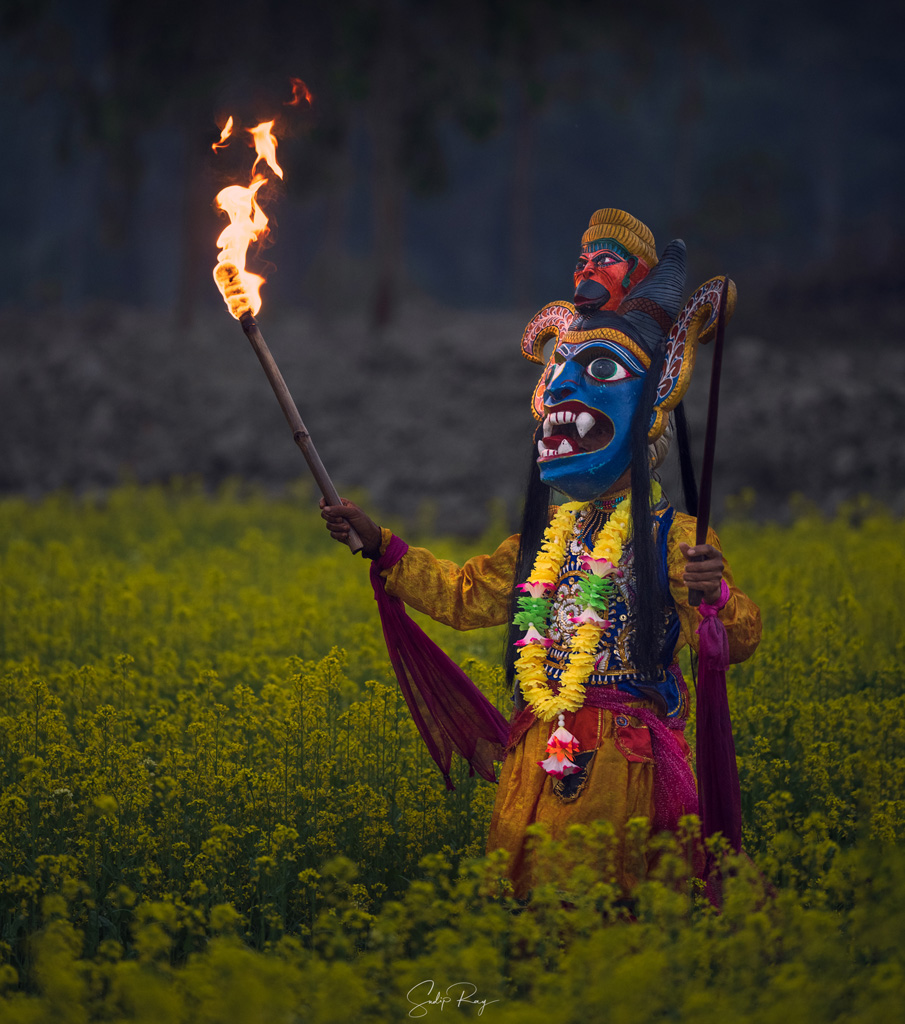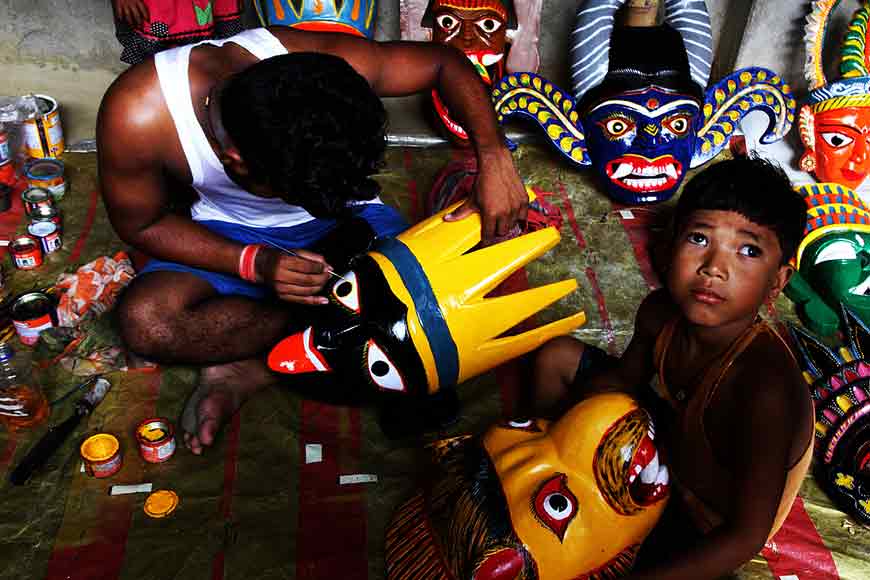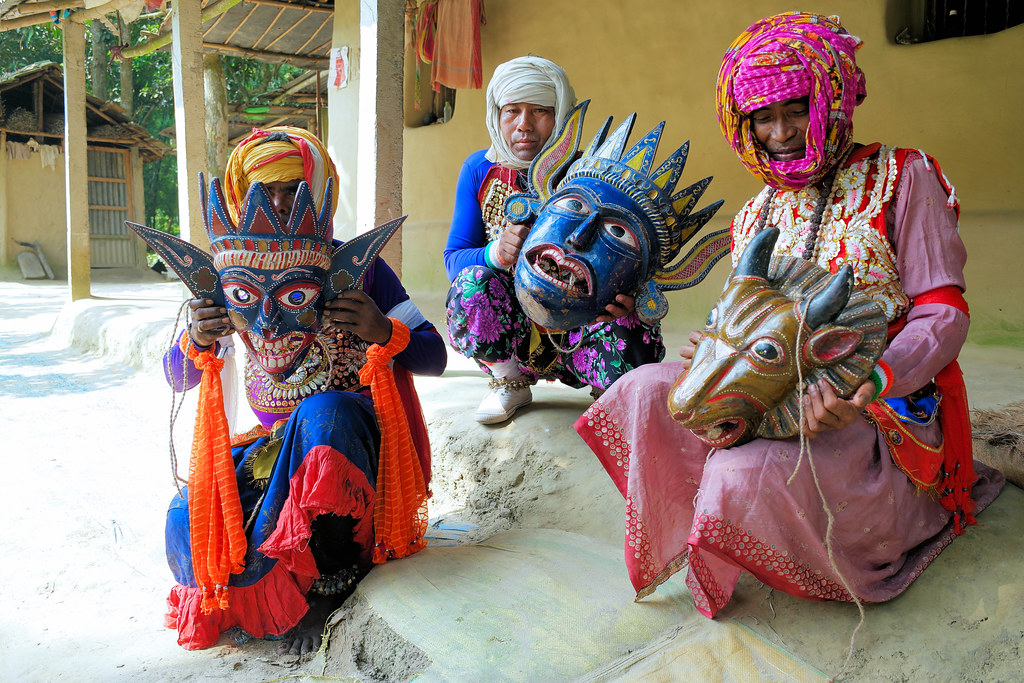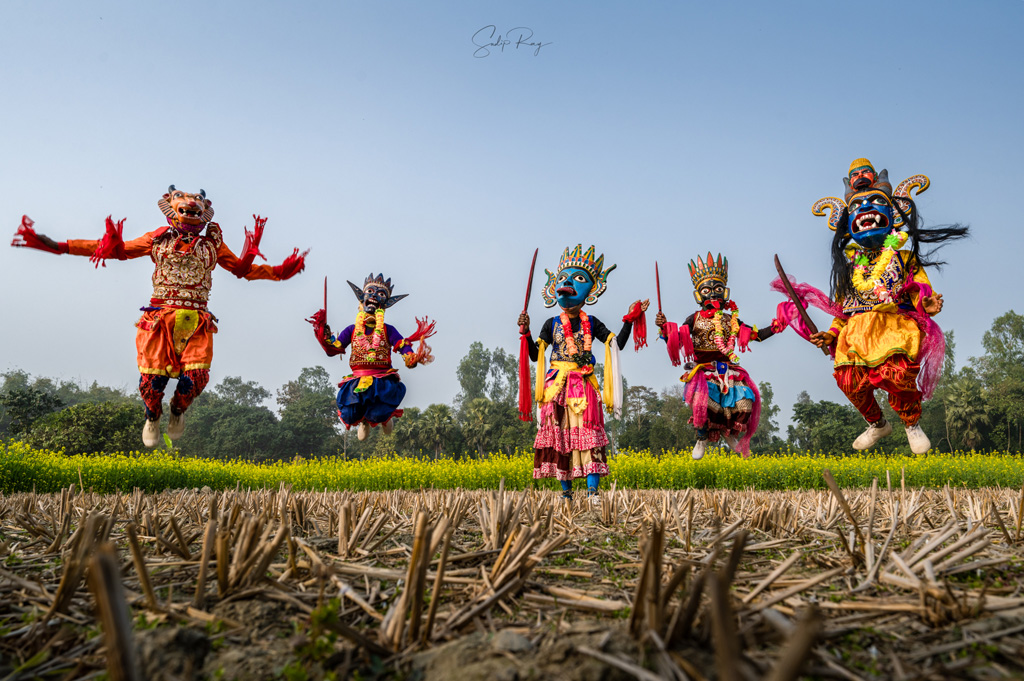Masked Marvel: Secrets of Gomira Mask Dance
The dance form belongs to the northern side of Bengal, where people are culture-centric and love to spread their traditions. The tribal dance I am writing about is called the Gomira mask dance. So, fasten your seat belts and let's dive in!
The tribal god, Gram Thakur or Gram Chandi, is the source of the term "Gomira." Gram means hamlet, and Thakur signifies God in Bengali. The main purpose of the Gomira mask dance is to honor the village god, or "Gram Thakur." The masked dance truly represents the ascent of good power triumphing over evil. Additionally, the purpose of this dance style is to ask the local god for a bountiful harvest year.
The diffusion of numerous cultures and their influences gave rise to the Gomira dance. As Mahayana Buddhism also carries a tradition of ceremonial mask dance, it is believed that Gomira can have a relation with it. Buddhism had a significant impact in Northern Bengal until at least the 12th century, at which point it progressively gave way to a variety of Shakti cults that persist to this day. The indigenous animist cults practiced by the many tribal populations in the area had an impact on Gomira as well.
Kushmandi, a small block in West Bengal's North Dinajpur district, has not received much attention. Similar to the majority of rural settlements in the state, the locals rely on fishing and agriculture. The Gomira Dance tradition, however, is what distinguishes this region. This dance performance, which is celebrated with wooden masks, has only been performed in this area for generations, with the tradition being passed down from the current generation to the next.
The performance of Gomira does not have a particular time or date. After "Chaitra Sankranti," or the last day of the Chaitra month, the masked dance is often performed. Throughout the Bengali months of Baisakh, Jaistha, and Ashaar—the English counterpart of these months, which run from the second half of April to the first half of July—the dancers participate in a variety of fairs and celebrations.
In order to get their desires granted, the locals frequently give a Gomira mask to the village god in devotion. In addition, they present these masks to the village deity as a sign of gratitude for their family's overall wellbeing. Additionally, on the day of the village deities' yearly festivals, unique mask dances are held in the majority of the villages.
The primary concentration of Gomira dancers is found in the districts of Uttar Dinajpur and Dakshin Dinajpur in West Bengal. In Uttar Dinajpur, the key artistic communities are situated in Thilbil and Goyalgaon within the Itahar block, as well as in Chandol, Krishnabati, and Bhelai within the Kaliyaganj block. In Dakshin Dinajpur, Gomira performers can be found in Mahishbathan and Khagrail under the Kushmandi block, as well as in Chakla, Jamuna, and Borogram under the Harirampur block.
Gomira dance masks are meticulously crafted from single blocks of wood, eschewing the use of multiple assembled pieces. The intricate process involves carving a large and thick wooden block using tools such as hammers, chisels, and carving knives to shape it into the desired facial form. Traditionally, Neem wood is favored due to its purity in Hindu religious beliefs. However, contemporary Gomira mask makers predominantly utilize wood sourced from Gamar trees, valuing Gamar wood for its durability. These wooden masks typically weigh between 2 to 3 kilograms. Occasionally, Gomira masks are also created using alternative materials such as paper and 'Shola'.
Types Of Gomira Masks:
1. Bura-Buri:
- The Bengali words 'Bura' and 'Buri' translate to old man and old lady. These twin masks represent the human avatars of Lord Shiva and Goddess Parvati. The Gomira dance typically begins with the entry of Bura-Buri, who engage in a slow and comical dance, drawing inspiration from the humorous elements found in the 'Mangal' literature of Bengal.
2. Bagh (Tiger):
- The 'Bagh' character, meaning tiger in Bengali, appears on stage following Bura-Buri. The dancer dons a tiger mask and black-yellow striped clothing, performing various acrobatic moves to entertain the audience.
3. Chamunda Kali:
- Chamunda Kali, a special form of Goddess Kali in Hindu mythology, plays a crucial role in Gomira. The mask of Chamunda Kali is larger and more elaborate. Usually, 2-4 dancers simultaneously perform as Chamunda Kali, wearing colorful traditional skirts. With their entrance, the tone of the performance shifts to a more serious ambiance, accompanied by quickened music and unique waist movements.
4. Dakini Bishal:- Believed to be the companion of Chamunda Kali, Dakini Bishal is portrayed by 2-4 dancers. They paint their bodies black, wear 'Ghagras' made from sarees, and accompany Chamunda Kali in the dance.
5. Shikni Bishal:
- Another female companion of Chamunda Kali, Shikni Bishal's mask is larger than that of Dakini Bishal. 2-3 dancers dress up as Shikni Bishal and dance alongside Chamunda Kali.
6. Nara Rakkhos (Savage Demon):
- This is the most terrifying character in Gomira dance, performed by a single dancer. Nara Rakkhos represents a savage demon, adding an element of fear and intensity to the performance.
7. Narasingha (Avatar of Lord Vishnu):
- Narasingha, one of the 10 Avatars of Lord Vishnu, is embodied by a single dancer who wears the Narasingha mask and performs a fast-tempo dance.
Each Gomira mask and character contributes to the rich tapestry of the performance, showcasing a diverse range of mythological and cultural elements.
The Gomira dance is exclusively performed by male dancers, who skillfully embody various characters, including males, females, and animals. The dance unfolds to the rhythmic accompaniment of Dhak and Kansar, notable for the absence of any songs or chants. Throughout the entire performance, there are additional ululations by ladies and conch shell rhythms. Gomira doesn't utilise any music.
One significant and powerful character in the sequence is Narsingha-Avatar, symbolizing the ultimate triumph of good over evil. Notably, Gomira dance performances feature moments of trance or Bhor, as termed in the local language, adding an intriguing dimension to the overall experience.
During the time of the performances, the dancers must abide by specific regulations. On the days prior to and following the dance, they exclusively eat vegetarian meals. They follow fasting on the day of the dance and only have steaming "Atop" rice after their performance is over. Every village in the North Dinajpur district has a temple devoted to Shakti, who is revered as a protector deity in all of her manifestations. The masks are displayed and set up for Nishi Puja, which takes place at midnight on the night before the dance. Prior to the dance, a special group of priests known as "Debangshi" perform a "puja" in which they sing "mantras" and sprinkle holy water, flowers, and "Bel" leaves in an effort to awaken the masks. The dancers then put on their assigned masks and begin to dance.
Interestingly, none of the Gomira figures ever appear on stage at the same time. One by one, they approach the scene in a serial fashion. The terrifying performance of "Nara Rakkhos" and "Narasingha" closes the Gomira dance, which begins with the entry of "Bura-Buri" and continues with "Bagh," "Chamunda Kali," "Dakini Bishal," and "Shikni Bishal."
The dancers portraying "Nara Rakkhos" and "Narasingha" frequently get possessed while performing (this occurrence is called locally as "Bhor Otha"). They become fierce and uncontrolled at this point. Offering pigeon blood to the "Nara Rakkhos," the "Debanghsi" placates the "Narasingha" with holy water, ceremonial flowers, and Tulsi-Bel leaves.
The Gomira dancers are actually from lower socioeconomic classes. The majority of them work as daily wage workers, agricultural labourers, and farmers. They don’t often get specific government funding intended for artists.
In an effort to support the Gomira artists, UNESCO and MSME (Ministry of Micro, Small, and Medium Enterprises) have organised a craft hub in collaboration with the Mahishbathan Village Handicrafts Co-operative Society. This hub teaches children the craft of creating Gomira masks and offers financial and infrastructural support to the artists. While they cannot perform in the Gomira dance, women actively engage in the mask-making process. Women receive specialised training to make paper and bamboo masks. To promote Gomira, the association holds an annual mask fair.





.png)




Comments
Post a Comment